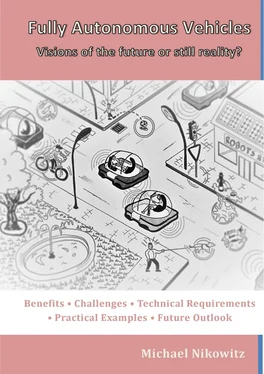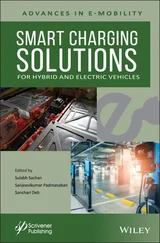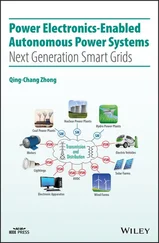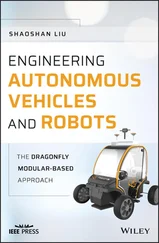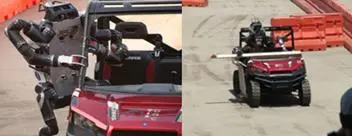
Fig 2: What people have in mind when they think about “robotic cars"- a car driven by a robot during the "DARPA"- challenge [5]
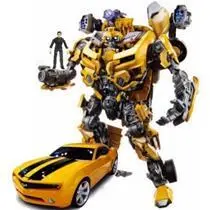
Fig 3: A robot that can transform itself into a car [5]
Today’s autonomous cars - or “robotic vehicles”- neither consist of a humanoid robot driving a vehicle, nor a robot transforming itself into a vehicle. Rather, it looks more or less like a conventional vehicle and consists of an array of sensors, actuators, computers, power electronics and communication tools. That’s the reason why the term “robotic vehicle” is not typically applied to contemporary autonomous vehicles. On the one hand it is obvious that these vehicles look and ride like conventional ones, but on the other hand people feel uneasy when they think about robots. Who wants to have a creepy ride?
It’s the same reason why unmanned public transport systems (i.e. subways) are also not called “robotic subways”.
Instead of using the term “robotic”, they are mostly named as "autonomous".
| Autonomous vehicles look like usual vehicles we drive today, taking over from the driver under certain circumstances. Fully autonomous or self-driving vehicles are more advanced. The vehicle will do all the driving, using the same system of sensors, radar and GPS mapping that autonomous vehicles employ. In the context of this book, the term “fully autonomous vehicles” refers to automobiles that are powered by autonomous technologies and are capable of travelling without human control of the vehicle. |
Currently, nearly every car manufacturer is working hard on the development and implementation of such vehicles. At the moment they can be identified by their sensors, which are necessary and mostly placed on the top of the vehicle. But even this recognition feature will disappear within the coming years.
Right now, one of the most popular autonomous vehicles are the driverless cars from Google, which are showed in Fig 4 and Fig 5.

Fig 4: Google's self-driving car (newest generation) [6]
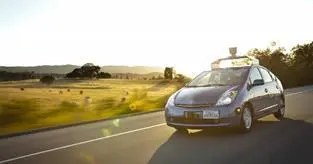
Fig 5: Google's self-driving car (earlier generation) [7]
So, how far away are we today from the visions from the early 1950’s (shown in Fig 1)?
It seems like we are not that far away!
So don’t worry if you see a vehicle coming down the street with nobody sitting inside. It might be a driverless one!
1.3 Why are autonomous vehicles important now?
Much like electric vehicles (EVs), autonomous vehicles may seem like a very recent initiative but were first developed years ago. The idea of driverless cars already existed several decades ago (as described in the previous chapter).
Experiments have been conducted on automating cars since at least the 1920s [8]. Fig 6 shows a selection of the history of autonomous cars.

Fig 6: History of developments of autonomous vehicles
Today, every major commercial automaker is engaged in research in this area. The introduction of fully autonomous vehicles to the general market is being predicted to occur within five to 20 years.
In 1961, we predicted that cars would be directed by a punched tape so you could sleep behind the wheel (compare Fig 7) . And in 1967, we anticipated you could twirl a dial on a car’s dashboard, set it to your destination, and then sit back to read the morning paper on the way to work. But maybe this time it’s for real (Popular Science, 2015 [9] ).
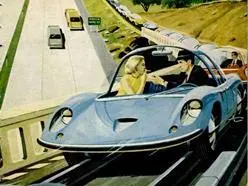
Fig 7: The Urbmobile - From the Popular Science archives [9]
What’s the differences between earlier notions, like in the early 50’s, and today? Why should they be available now but were not in earlier days?
Nowadays, the technology appears close to commercial introduction and maturity. This stands in contrast to earlier decades in part because global megatrends have huge influences on our mobility and on our vehicle concepts.
These global megatrends include: global environmental stress, globalization, urbanization and megacities, demographic change and the contemporary digital lifestyle.
Today, there are around 1 billion automobiles in use worldwide.This large number of vehicles has caused and continues to cause a series of major issues in our society, like greenhouse gas emissions, air pollution, oil depletion, energy insecurity and population growth.
The focus of interest has shifted towards efficient and fast transport in urban areas - individual transport will still remain in a multi-modal transport scenario.
Further, the development of the world’s population and urbanizationis playing a major role, as there will be a strong shift towards urban population until the year 2050, according to several reports from the United Nations. This development is visualized in Fig 8, which shows the development of the urban and rural population of the world from 1950 through 2050 projections. This draft highlights the trend to move in big cities - a trend, which is still unbroken! In 1800, only about 3% of the world’s population lived in urban areas. Today nearly 54% of the world’s population is located in urban areas. By 2025, there will be 29 megacities (cities that have a population over 10 million people), most of them in developing countries. By 2050, over 70% of the world’s population will live in big cities.
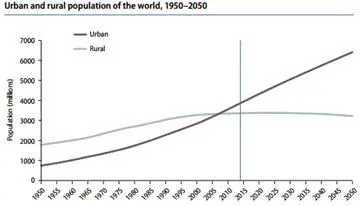
Fig 8: Development of urban vs. rural population worldwide [10]
Fig 9 demonstrates the influence of the demographic changeon the mobility of the future. The trend towards urbanization influences the ability to support people to get hassle-free from A to B. Additionally demographic change has a massive impact on the need for zero accidents, as the safe mobility of elderly people has to be managed. Efficient and zero-impact transportation will be one of the key challenges of our society.
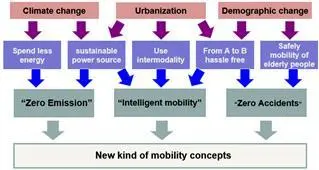
Fig 9: Global megatrends strongly influence our future
| Major trends like connectivity, shared mobility, automated driving, light weight vehicles, consumers’ increasing levels of digital experience and alternative fuels will have a massive impact of the future of the automotive industry. |
These facts have huge consequences for our automobile manufacturing industry in general, but city vehicles will get influenced most by increasing regulations that will continue to require them to perform "better" than today!
Читать дальше
